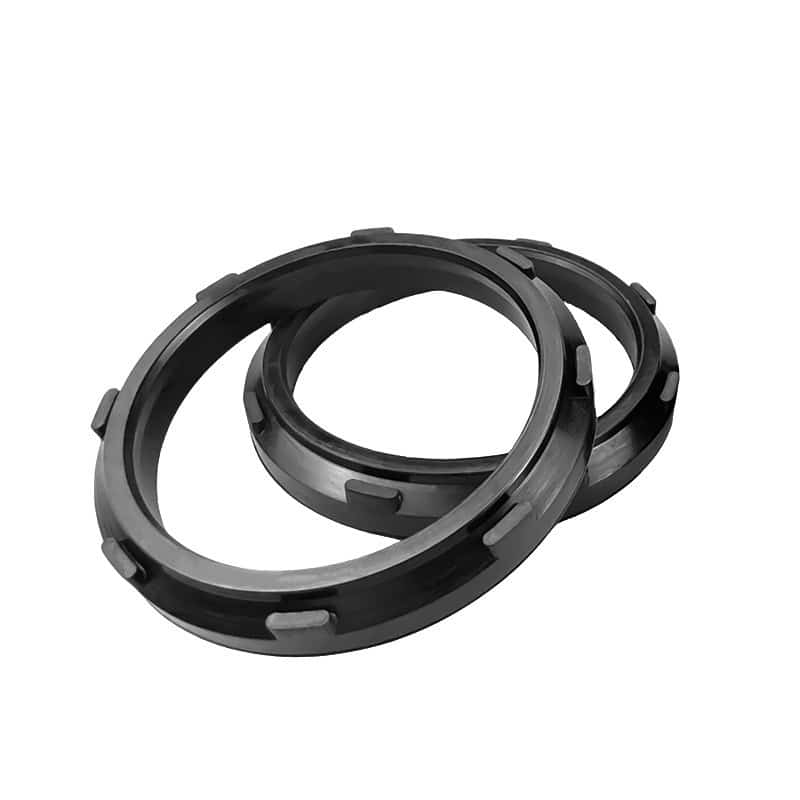Having trouble selecting the right 공압 피스톤 씰 for your system? You're not alone—there are dozens of profiles, materials, and use cases. But the wrong choice can lead to air leaks, frequent breakdowns, and costly downtime.
공압 피스톤 씰 maintain pressure inside air cylinders by sealing the gap between the piston and cylinder wall. A well-chosen seal ensures energy efficiency, long service life, and consistent linear motion.

In this guide, I’ll walk you through the most common types, materials, and applications of pneumatic piston seals—so you can make the right choice.
What types of pneumatic piston seals are available?
Not all piston seals are created equal. The ideal seal profile depends on your system's load, pressure, and motion speed.
Here are the four main types you’ll encounter:
| 유형 | 설명 | 최상의 사용 |
|---|---|---|
| 대칭형(Z8, COP) | Identical lips on both sides | Reversible stroke cylinders |
| 비대칭(Z5, KDN) | One larger lip on pressure side | Standard single-acting setups |
| Composite (PPD) | Multi-material laminated design | High load, long-cycle systems |
| 전체 피스톤(DK, DE) | Integrated piston + seal combo | Compact pneumatic actuators |
Each seal profile offers specific benefits. For example, symmetrical seals perform well in cylinders that reverse frequently, while composite seals last longer under friction-intensive conditions.
You can find all of them on our pneumatic seal product page.

Where are pneumatic piston seals used?
Pneumatic piston seals are used in almost every machine that relies on compressed air to generate motion. Without them, your cylinder would leak air pressure and lose effectiveness.
일반적인 응용 분야는 다음과 같습니다.
- Pick-and-place robotic arms
- Pneumatic presses in packaging lines
- Linear slides and actuators in automation
- Sliding grippers in assembly equipment
- Compact air cylinders in industrial tools
When you're unsure which seal fits your setup, refer to our in-depth pneumatic cylinder seal selection guide.
What are the best materials for pneumatic piston seals?
Material selection directly impacts seal performance and lifespan. Here's a breakdown of the three most popular options:
| 재료 | 주요 강점 | 제한 사항 |
|---|---|---|
| 영어: NBR (네이버) | 내유성, 비용 효율성 | Poor high-heat resistance |
| 에프케이엠 | Excellent chemical & temperature resistance | Higher cost |
| 티피유 | Superior abrasion resistance, low friction | Weak chemical durability |
For light-duty industrial air cylinders, NBR often works fine. But if you're dealing with aggressive chemicals or high heat, FKM (like Viton®) is the safer choice.
Need help comparing? Our team can recommend the best material based on your air pressure, cycle rate, and environment.
Can I replace pneumatic piston seals without full cylinder disassembly?
In most cases, replacing a piston seal requires disassembling the cylinder. This typically means removing the end caps and pulling out the piston rod.
However, it's a great opportunity to inspect your 더스트 와이퍼 씰 and rod seals, which often wear out at the same rate.
If you're performing regular maintenance, consider switching to a seal design that allows easier replacement—such as DK-style integrated pistons.
프로 팁: Always use a proper seal installation tool and light lubrication to prevent nicks and premature wear.
결론
Pneumatic piston seals are small but essential components in industrial automation. Choosing the right one depends on understanding the seal type, system application, and compatible materials.
Whether you're working on packaging lines or robotic arms, Hengoseal offers a wide range of options—ready to ship worldwide.
Find the Right Piston Seal Now
Need help identifying or sourcing pneumatic piston seals? Contact us for a quote, OEM match, or free consultation.
📧 이메일: [email protected]
📱 왓츠앱: +86 17622979498
Browse piston seal kits and custom sizes
Related Topics
- How to Choose Pneumatic Cylinder Seals
- Wiper Seals for Dust Prevention
- Beginner's Guide to Pneumatic Seals


